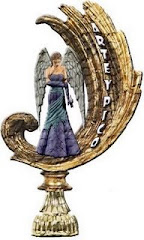One of the more unpleasant sides of living in Arizona is the increase in bugs down here. I was concerned this would be the case as everyone I know of who has lived anywhere in the south always complains about the bugs. We have termites here I'm told, though I have yet to see one. Still, termite protection was a must when we bought our house. The butterflies are beautiful, of course, but I could do without the rest of these critters!
Right now with the humidity I am getting unpleasantly acquainted with some tiny little insect that likes to hover around your body when it's damp with sweat. They are like tiny flying dust specks that land on your skin and crawl around or bite. You can barely see them but I find myself slapping away at them. Annoying.
Then, there are the beetles. Some of the biggest beetles I have ever seen! One dog-sized insect tried to crawl into our garage late one night but, being in a merciful mood and afraid of the damage it would do, I scooped it up with a bowl and tossed it with a thud to the side of the house! Then, there are these iridescent black/purple/blue beetles that fly around and land on trees or in my backyard. They are a bit bigger than the June bugs I remember from Connecticut but the same body type, and while they are pretty, I hate it when they fly at my hair, and they do! I've taken to always wearing a hat when I go outside for a walk because they seem particularly attracted to my hair, and, unlike eastern June bugs, these are diurnal. Still, I haven't the heart to kill a creature that has done me no harm, so when I found one flailing upside down on my patio I took a plastic saucer and flicked it onto the dirt where it was able to get enough purchase to right itself. (There was no way I was going to touch it!)
Along with the beetles, we have the moths. Earlier in the summer there were these coin sized brown moths that hung around the front door. Every time we opened the door a few would fly into the house. Then, my cats, Breezy and Bonnie would spend the rest of the day hunting them down. One night after midnight I was awakened by the sounds of shattering glass. I could hear the terrified scrambling of little paws as I leaped from my bed. I flipped on the kitchen light to discover that Breezy had stalked a moth all the way to the tops of my cupboard where I had artfully arranged some candlesticks, china, photos, and my bride and groom champagne glasses from 30 years ago. The bride's glass now lay in a million fragments all over the tile kitchen floor. It took me an hour to clean it all up. In spite of all my best efforts, I was still finding glass shards days after.
The other moths we have here aren't nearly as bad. In fact, they are almost pretty. Day or evening we see them as we take Blossom for her daily constitutional along our tree lined streets. Some of the trees are desert willows with fragrant trumpet-shaped blossoms in shades from pale pink to garnet. These moths hover like humming birds getting drunk on the nectar of the desert. Sometimes they fly out, startled by our presence, but they quickly return to the object of their obsession.
However, the most insidious insects I have encountered so far are the crickets. Having grown up in New England I am used to the black crickets who sing their nightly songs. It is a cheerful sound of summer, soothing in its patterns and rhythms. While I have seen a few of those black crickets here, the more numerous kind is this skeletal brown insect with long antennae that shriek all night long. There's is not a melodic sound, but rather more like the constant whine of a washing machine as it spins the cloths dry. You want to shut it off, but you cannot find the source. And then, to my further horror, I went out to the garage the other day to get something out of a box that was stored out there. When I approached I noticed these black specks all over the place. I lifted a box and brown crickets were scurrying every where. They looked at me with beady eyes and monster jaws. I am assuming the black specks are their excrement getting all over my books! I now know that not only do I not have a basement to store things in, I will also have to store everything in plastic containers or it will all be ruined by crickets!
Ugh! Bugs!










